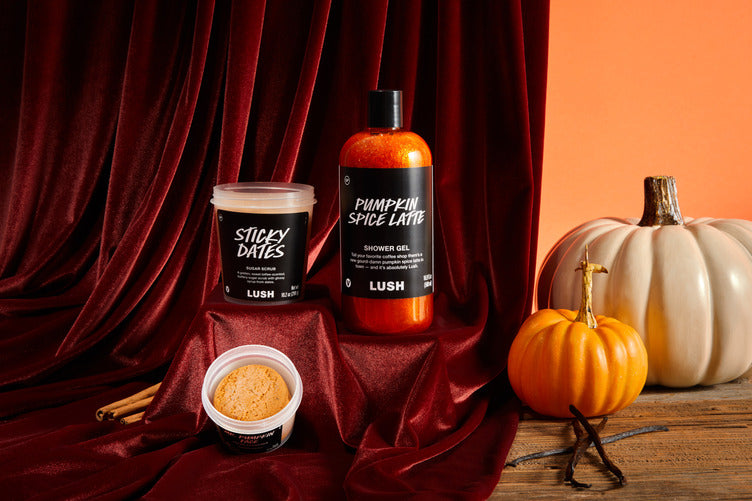"When it comes to conventional creams, formulators are looking at thickness, stability over 36 months, costs – 101 things that have nothing to do with the effect on the skin. But Dream Cream is all about the effect on the skin"
Mark Constantine, LUSH co-founder and Product Inventor
Over the years, many parents have claimed that LUSH’s Dream Cream body lotion has helped soothe their child’s eczema. Some even spoke to the press and had our customer service phones buzzing for a while. Lush founders, inventors, staff, and their families have used this product more times than can be counted and are already convinced it's a wonder, but that's not enough to sing and dance about it publicly. Legally, we need to have real clinical proof of its benefits for medical conditions like eczema before shouting, which, let's be honest, is super fair. So here we are, 28 years after Dream Cream was invented, 10 years after its formula was upgraded to a self-preserving version, and (probably) billions of applications after its first release. The time has come to test the dreamy effects of our cream!
The study
We conducted a clinical study to assess the effects of regular use of Dream Cream Self-Preserving body lotion on fifty children aged three to twelve with diagnosed mild to moderate eczema. For four weeks, parents applied the lotion to them, focusing on the areas where eczema was visible, most commonly the inner elbows, inner thighs and back of the knees. Skin colour was an important consideration within the study, as conditions like eczema can present differently on different skin tones. The lab performing this study for us used a well-known measurement of skin colour, the Fitzpatrick Grade, to look at the skin tone of participants. All skin tones were represented from Fitzpatrick Grade 1 and 6, but a majority of children had pale skin (Fitzpatrick Grade 2). With this in mind, working with a test house to improve diversity and inclusion would certainly be a priority for us in any future clinical tests we commission.
An external consultant, a paediatric dermatologist, assessed the lotion’s impact on the skin, evaluating the extent of atopic dermatitis and if the product reduced the severity of the symptoms. The symptoms observed are typical of the condition: erythema (redness), dryness, irritation, thickening and scaling. The dermatologist met the children before, two weeks into, and after a four-week application period. Additionally, parents kept a diary and completed questionnaires before and after the study, including a self-grading assessment and a perception questionnaire regarding the product.
The results
The overall evaluation showed significant improvements in all examined body sites, indicating a reduction in eczema-affected areas with regular use of Dream Cream Self-Preserving over four weeks. Assessment scores for dryness, redness, scratch marks, and skin thickening all demonstrated notable improvements throughout the study.
The dermatologist observed that:
- Erythema was swiftly reduced on thighs.
- A visible reduction in erythema was also observed on the elbows.
- Redness statistically improved on both the knees and thighs after two and four weeks of use.
- There was a notable reduction in scaling and dryness across all body sites.
- A significant improvement in scaling and dryness was visible after immediate application to the thighs and knees.
The parents' assessment of subjective parameters, such as itching and sleeplessness, showed significant improvement consistently across all evaluation points. This indicates that parents perceived an immediate improvement in their children's behaviour after one application and that continued use of the lotion maintained these benefits.
Results from the questionnaires revealed that:
- 85% of parents believed the product relieved their child's eczema after four weeks of use.
- 85% of children found the product enjoyable for managing their eczema.
Nothing like the original. Really?
In a separate clinical trial, we also tested our preserved formula (the ‘original’ Dream Cream) so we could compare the effectiveness of both versions. This original formula uses added synthetic preservatives called parabens to keep the product fresh, while the SP formula is formulated to stay fresh and effective without these. Dream Cream Preserved is slightly lighter in texture, and so we were eager to know if the self-preserving formula would live up to its predecessor. Interestingly, while both products achieved clinical benefits, our SP version of Dream Cream slightly outperformed the preserved version. 78% of parents felt the preserved product relieved their child’s eczema after 4 weeks of use, and 70% of the children enjoyed using it for their condition. Although the study authors evoked that the time of year may have influenced these findings, we can certainly be reassured that the SP version of this product is just as good as the preserved version, if not better! For Helen Ambrosen, Lush co-founder and product inventor who managed to make Dream Cream self-preserving after 90 trials, the hero ingredient here is oat milk. It makes up over 30% of the SP version! “We make an infusion of oats and water that creates a very thin ‘porridge’,” she explains. “This enables us to get the best out of the oats and onto the skin. The olive oil in the product is also lovely, but it's a surface emollient that keeps the skin soft and from losing moisture. Oat milk is the magic.”
Shop this soothing fan-favourite on our website and in our shops. Ask our staff what they think of it - they may give you a nice, calming arm massage! You can also treat yourself with these Dream Cream-inspired product : a softening and relaxing bath bomb.
Written by Florence Bossière, ingredient writer













